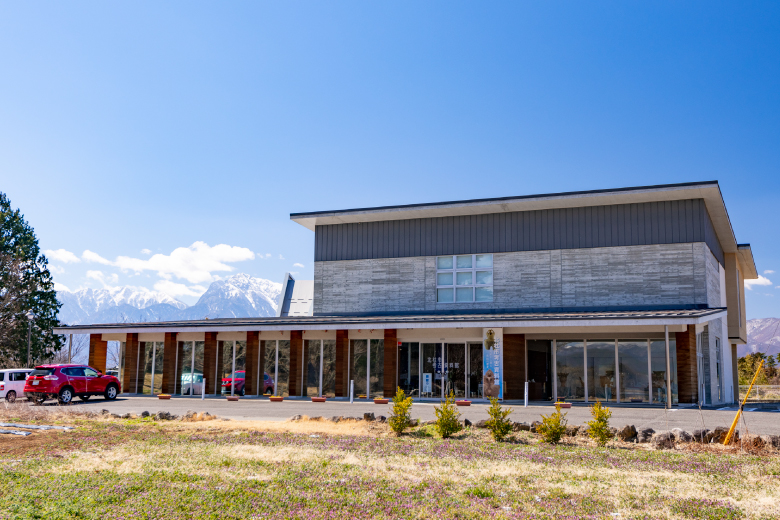Situated adjacent to Yato-jo Castle Ruins, Hokuto Archaeological Museum displays a collection of artifacts from the Paleolithic Period (beginning around 40,000 BCE) to the Middle Ages in Japan, discovered from within Hokuto City.
Hokuto City is home to numerous ruins dating as far back as the Paleolithic Period, and is also where pottery flourished during the Jomon Period (ca. 14,000–300 BCE). Ruins from the Yayoi Period (ca. 300 BCE–250) and Kofun Period (ca. 300–600) have also been discovered in recent years, revealing that large forces had existed in the middle basin of Hato River.
The terrain at the southern foot of the Yatsugatake Mountains is suited to breeding horses. During the Heian Period (794–1185), government-owned ranches for breeding horses to be offered to the Imperial Court were situated here. This is said to be one of the reasons why the Kai Genji Clan relocated to this area. As descendants of the Kai Genji Clan, members of the Takeda Clan also boasted strong military power based on a cavalry troop.
The museum also exhibits archaeological items excavated from Yato-jo Castle Ruins and Kinsei Ruins, a prehistoric archaeological site.
Hokuto City is home to numerous ruins dating as far back as the Paleolithic Period, and is also where pottery flourished during the Jomon Period (ca. 14,000–300 BCE). Ruins from the Yayoi Period (ca. 300 BCE–250) and Kofun Period (ca. 300–600) have also been discovered in recent years, revealing that large forces had existed in the middle basin of Hato River.
The terrain at the southern foot of the Yatsugatake Mountains is suited to breeding horses. During the Heian Period (794–1185), government-owned ranches for breeding horses to be offered to the Imperial Court were situated here. This is said to be one of the reasons why the Kai Genji Clan relocated to this area. As descendants of the Kai Genji Clan, members of the Takeda Clan also boasted strong military power based on a cavalry troop.
The museum also exhibits archaeological items excavated from Yato-jo Castle Ruins and Kinsei Ruins, a prehistoric archaeological site.
COURSE MAP
Where to next?
Visiting spring water sites
The curse and blessing of water from Mount Yatsugatake
There are many springs at the foot of Mount Yatsugatake that served as precious sources of water for the people living in the area. Unfortunately, however, they also caused landslides, called On-dashi, that caused significant damage to the area. Around Bomichi road, springs, systems to share the spring water, and traces of landslides, including huge rocks, remain.
About 10km / About 5 Hours / On foot
